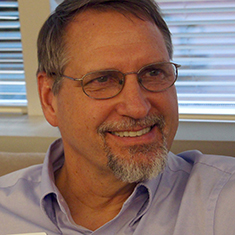Earlier this spring, the East Africa Trade and Investment Hub achieved a major milestone by surpassing the $100-million mark in commercial investment catalyzed into the region. This investment would not have found its way to these markets without the approximately $4 million nudge offered by the Hub, a U.S. Agency for International Development (USAID) initiative implemented by DAI. Given the potential impact of the investee companies, this project shows how a donor like USAID can leverage its relatively scarce capital to crowd in more plentiful commercial funds—a process known as blended finance. The leverage factor is almost 25x.
The $100 million funded 17 investments in sectors as diverse as agribusiness, mobile technology, and apparel. A great example of a high-impact company is Twiga Foods, a Kenya-based mobile platform that provides seamless logistics support for fresh produce from farm to fork—removing intermediaries, reducing costs, cutting post-harvest losses, and getting food where it needs to go.

Most of these funds have been invested in Kenya and Ethiopia. Both are considered “frontier” markets by most investors, who perceive high levels of risk. Typically, investors would require higher rates of return to make up for the extra risk incurred in these markets. But the Hub takes a different approach: we ask, what can we do to “de-risk” the project, bringing the odds of success more in line with markets that investors already understand?
Here’s how it works: our transaction team offers support to local firms on the investment process and guidance on investment sourcing, due diligence, and markets to potential investors (private equity funds, corporates, banks, development finance institutions, impact investors, and so forth). In some cases, we might need to employ additional instruments such as matching funds, credit guarantees, or political risk insurance. Each transaction calls for a tailored package of support, depending on the circumstances. We find the right ingredients for each case and see it through until the deal is done.

Investors have a herd mentality. In many cases, multiple investors will follow each other into a particular company, sometimes using different instruments. The key is to get one of them to move first so that the others follow. According to the United Nations Conference on Trade and Development, the biggest source of foreign direct investment is follow-on investment either from existing investors or new investors mimicking their peers (the herd effect).
But blending is not magic; on the contrary, it can be really hard work! And not everyone loves blending. We frequently hear concerns about “overblending” or distorting the market with too much concessional donor funding. The value of the blended capital market is estimated at $25.4 billion, which is a big number but small in the scope of global capital markets measured in the trillions. Should we really be using taxpayer money to subsidize private companies when the transactions should happen on a market basis?
The reality is that the invisible hand of the market does not always channel investments to their best use from a social or environmental perspective. If we believe that the best poverty reduction tool is a job and that dynamic private enterprise should create that job, then driving investment to opportunities that are just beyond the reach of the current market is a potent solution. We make transactions happen where they otherwise wouldn’t, benefiting the investors, investee companies, and workers. As a bonus, the products or services of these investee companies often benefit society as well—by filling an access gap for poor or low-income people, for instance, or creating jobs.
The Hub’s leverage factor of 25 is excellent value for money. But we need to figure out how to become even more efficient, maximizing the impact of every single donor dollar spent. The three main challenges we see include the lack of capacity within transaction advisory firms, the significant costs of setting up and executing a high-impact transaction facilitation service, and the difficulty of identifying high-potential deal flow with a high probability of closure over the short-to-medium term.

The Hub experiment and others like it reflect a fundamental shift in mindset and practice in the development space. Increasingly, donors, philanthropists, and investors recognize that the only way to reach lofty development objectives such as the Sustainable Development Goals is to capture private investment. All the government and donor capital in the world cannot possibly fill the $2.5 trillion gap identified by the United Nations as necessary to meet the SDGs. Blending concessional money to crowd in private investment is not just a trendy approach, but absolutely necessary to address the social and environmental challenges of our time.





